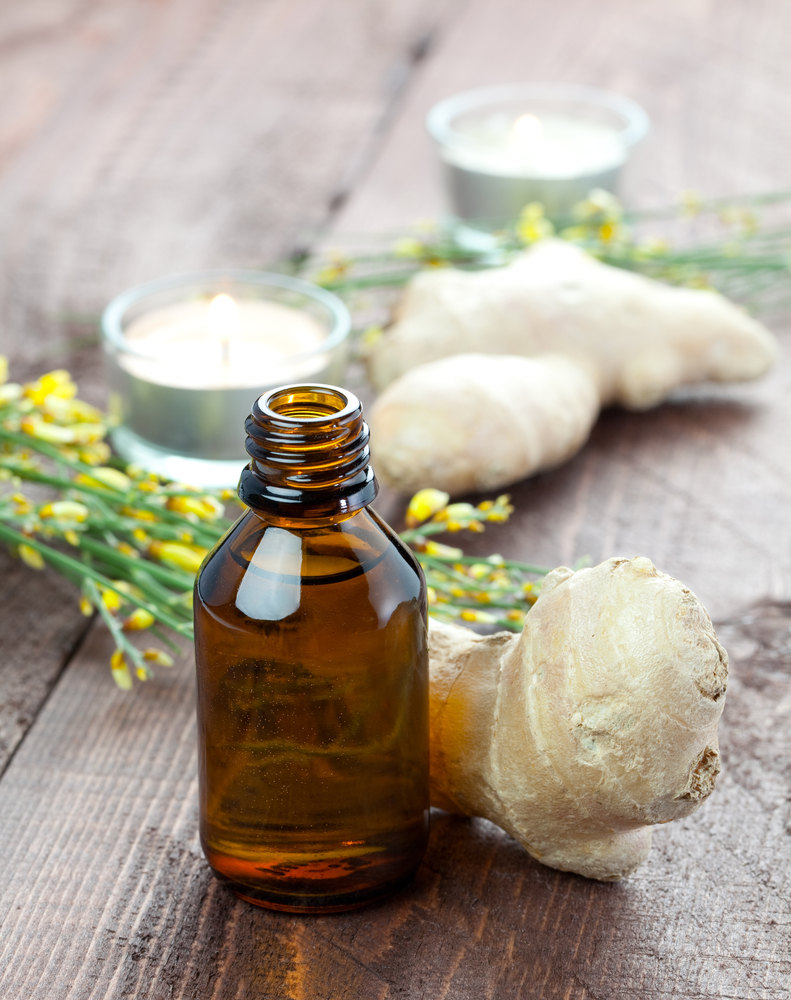 The combination of orange (citrus, fresh and sweet) and ginger (spicy, warm and radiant) essential oils is a harmonious delight, very unique in character and is set apart as one of the best energizing duos of aromatherapy. When you blend orange and ginger, they become an aromatic bouquet for beauty and wellness, and therapeutically these oils work really well in unison.
The combination of orange (citrus, fresh and sweet) and ginger (spicy, warm and radiant) essential oils is a harmonious delight, very unique in character and is set apart as one of the best energizing duos of aromatherapy. When you blend orange and ginger, they become an aromatic bouquet for beauty and wellness, and therapeutically these oils work really well in unison.
Read on to learn how this pair can work wonders on your body and in your home.
Orange for Detox, Beauty and Brightness
Orange is botanically known as (Citrus sinenses) and is native to southwestern China. It was brought to the West Indies by Columbus and flourishes in tropical climates. The essential oil is extracted from the peel of the orange and is extracted by cold pressing.
Aromatherapists consider orange essential oil to be an antidepressant oil and recommend it for anxiety and depression. Orange is one of the key oils for detoxifying the system and helps the body:
- eliminate internal toxins
- promote urination to remove uric acid, excess salts and excess water
- treat constipation and slow digestion
In addition, it is considered a beauty oil beneficial in skin care, especially in the treatment of acne. Orange is used in private label beauty and cleaning products for its refreshing scent and antiseptic properties. The oil of the orange is delightfully bright, signals optimism and brings wellness to any home. It’s truly a universal blending scent, which mixes with just about everything!
How To Use: For a more calming atmosphere, add five drops of orange essential oil and three drops of ginger essential oil in your favorite diffuser and simply relax. Or, add five drops of orange and three drops of ginger to a four-ounce spray bottle filed with water and spray throughout your home.
Ginger for Stomach Upsets and Skin Conditions
It is believed that ginger (Zingiber officinale) was brought to Europe between the 10th and 15th centuries to be used as a condiment. Ginger has been revered for thousands of years as a universal medicine, especially in countries such as China and India, and today it is renowned for its healing properties and recognized as a popular spice. Ginger root is well known as a culinary herb used in Asian cooking, but in aromatherapy ginger essential oil packs a punch for many different aliments, especially fast relief for easing an upset stomach. The essential oil is extracted by steam distillation from the ginger root.
How to Use: It may be inhaled from a tissue to alleviate indigestion and morning sickness during pregnancy. For treating bruises and sores on the skin, ginger is one of the best oils and rubbing it on the affected areas should speed the healing process and ease the pain associated with the injury. In steam inhalations, it is helpful for colds and flu and its germicidal properties make it an excellent choice to combat infections.
READ: Build Your Essential Oils Starter Kit
Orange and Ginger Massage Blend
Ginger oil is a nice addition to your massage oil or body scrub, as it can ease minor aches and pains. The warming properties of ginger oil make it a wonderful choice for a soothing ,yet invigorating bath and will help improve circulation.
How to Use: Add three drops of orange and two drops of ginger to one cup of your favorite carrier oil, and shake to mix well. The best carrier oils to use when making a massage blend are jojoba oil and sesame seed oil. Jojoba oil has a very similar chemical makeup to your skin’s composition, plus during massage it keeps the skin lubricated to prevent damage. Sesame seed oil plays a vital role because it penetrates into the skin readily and helps remove toxins.
As one of the more odoriferous oils, ginger should be used in moderation, but as you can see, the affinity with orange is unmistakable.
Visit the BlackDoctor.org Whole Health Living center for more articles and tips.
Patricia Brooks is the editor-in-chief of Aromatherapy Thymes Magazine, the premier publication dedicated to sharing the most current information about the aromatherapy industry and the practical use of essential oils. Visit Aromatherapy Thymes for more information.








